Heads-up displays are going high-tech and full color with the introduction of holographic augmented reality (AR).
It is being introduced to the automotive sector through collaboration between HARMAN International, a leading connected technologies company for automotive, consumer and enterprise markets and WayRay, a global company based in Switzerland. It specializes in development and production of transparent holographic displays based on HOE (holographic optical elements) and commercialization of this technology for consumer electronics and B2B markets.
WayRay’s Navion is a holographic navigation system for cars. Navion creates an AR image where a virtual route is holographically projected into the regular focal range of the driver. The driver sees the navigation signs laid out directly on the road ahead of the moving vehicle, so his/her eyes remain safely focused on the road at all times. Projection is by a compact device placed on the car’s dashboard. Other AR devices currently on the market require the use of eyewear or headgear to see the image. Navion is designed to work in bright sunlight. The system can be fully integrated into HARMAN’s end-to-end automotive connected car platforms that make the autonomous driving experience intelligent, safe and intuitive.
“HARMAN’s collaboration with WayRay is another example of our drive to deliver seamless, integrated, connected and safer experiences in the car,” says Phil Eyler, president HARMAN Connected Car. “Holographic displays offer the opportunity to make self-driving vehicles safer and more reassuring for passengers,” adds Vitaly Ponomarev, CEO and Founder, WayRay. “By providing visualizations of what is happening around the car, the road surface and relevant points of interest along the route, passengers are kept fully informed throughout the trip, even if they’re not actually driving.”
Since it was founded in 2012 the company has emerged as a premier developer in connected cars by applying aerospace technology to land navigation. The people behind WayRay are an international team of more than 100 top-ranked engineers, scientists, designers as well as professionals in finance, law, and marketing. Many are pioneers in their fields.
WayRay’s first product was Element, which is a small dongle-like gadget that plugs into any OBD port. It collects and analyzes data from the car to generate insights about the driver’s performance on the road. Drivers can see how many miles they have driven, hours spent at the wheel, average speed and fuel consumption. Element comes with an “Autoyoga” feature that works as a personal coach to help improve driving skills through a series of fun quests.
The WayRay story is woven from experiences had by its founder. “I was living in Moscow at the time, and I was driving at a low speed while also trying to adjust my brand new GPS,” Ponomarev says. “My attention got distracted just for an instant and I had my first ever car accident. The accident had a profound effect on me and I began to think about how the windshield is the perfect place to start when it comes to improving car safety. That began this remarkable journey and inspired the creation of WayRay.”
Automotive Industries (AI) asked Ponomarev to describe the WayRay infotainment system.
Ponomarev: WayRay is the step between where we are now and the future self-driving car that is connected to a city’s infrastructure. The WayRay infotainment system seamlessly blends the real world driving (or passenger) experience with augmented reality. It’s the technology you’ve only been able to see in movies up to now, and is making the windscreen a new medium for contextually relevant information for drivers and entertainment for passengers.
AI: What makes the WayRay navigation system unique?
Ponomarev: WayRay’s use of holographic optical elements keeps the system far more compact than traditional mirror and lens technology, and allows for a high-resolution projection directly in front of the driver. It is the first in-car system to use color holographic technology (previously only green) and is also the only system that will provide useful information to a driver while keeping passengers entertained. In a driverless car, both users can use the entertainment features. Furthermore, the system provides a smart driving assistant that collects your driving stats and patterns, offering up a gamified system of rewards that keeps the daily drive to work as fun as it can ever be.
AI: What about the safety aspect?
Ponomarev: A holographic display allows drivers to stay fully focused on the road, while being provided with timely route information. The system uses augmented reality to display real-time indicators for things like pedestrians in the road, displaying points of interest or alerting you to hazards like someone opening their car door in a narrow street as you approach. Add in messaging and social updates delivered when the car is stationary (or being used in auto-pilot) and the augmented reality driving experience is unparalleled. At its heart is a smart satnav that knows when your favorite route will be jammed with traffic from a football match or concert, and will reroute you to avoid the crowds. Naturally, you can do all that hands-free, using voice and gesture controls to get you safely to your destination.
AI: What is included in the system?
Ponomarev: The core of the system is Navion – a standalone unit that uses holography to provide driving and navigation information to the driver. It eliminates the need to look away and refocus your eyes while driving, which means there is less distraction, making your trip safer. Navion is supported by Element – a premium car tracker and smart driving assistant and the WayRay app, which is used to control your infotainment system.
AI: Tell us about your partnership with HARMAN.
Ponomarev: It is a great step forward in that it provides a Tier 1 company access to our technology and provides us with the benefits of an experienced OEM with existing integration services. The win-win model allows us to develop different relationships simultaneously and bring more AR experiences to market.
AI: How do you see AR-based navigation systems growing in the future?
Ponomarev: In five years AR will be standard in every new car sold. Car companies and technology giants will cooperate to provide better AR experience for drivers and passengers — there’s already a lot of content that could be shown including navigation, updates from social networks, and even games.
AI: Why is AR technology better for navigation than other systems?
Ponomarev: We call our technology True Augmented Reality because the virtual content overlays the real-world very precisely. Virtual objects are located at the same focus distance as real objects — this means that drivers don’t need to continually refocus their eyes, thereby making driving safer through fewer distractions. It’s like having a new sense.








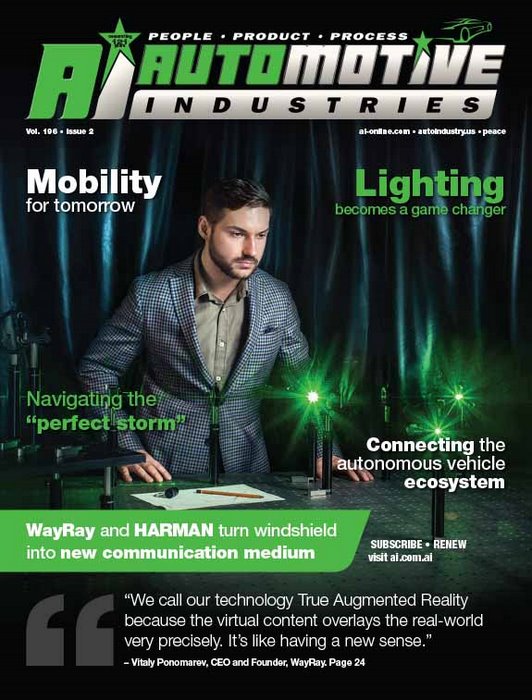





































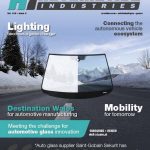 Glazing  as a competitive edge
Glazing  as a competitive edge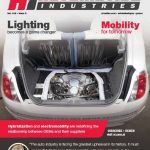 All-new e-drive technologies challenge suppliers to connect
All-new e-drive technologies challenge suppliers to connect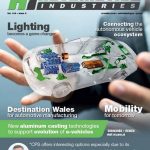 Casting solutions for e-mobility
Casting solutions for e-mobility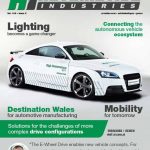 Mobility for tomorrow Â
Mobility for tomorrow   Additive manufacturing evolves from niche technology to mainstream production
Additive manufacturing evolves from niche technology to mainstream production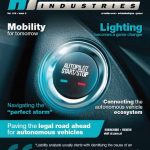 New laws needed to pave the way for autonomous vehicles
New laws needed to pave the way for autonomous vehicles


